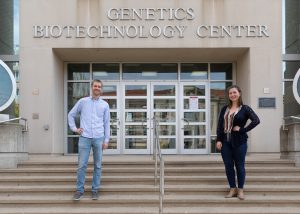
We have observed that commonly used volatile general anesthetics (VGA) affect outcomes in a model of blunt trauma with traumatic brain injury (bTBI) model implemented in the fruit fly Drosophila melanogaster. While trauma in fruit flies does not equal trauma in humans, all metazoans had to evolve responses to life-threatening injuries and successful responses have been conserved with modifications throughout evolution. Because of evolutionary conservation, findings initially made in flies have made possible clinically important discoveries in higher organisms. Specifically for humans, these discoveries have included Hox gene control of body plan development; Toll pathway mediation of the innate immune response to pathogens; period and clock gene coordination of circadian rhythms; chromatin-based regulation of epigenetic inheritance; and Wnt, Notch, and Ras signal transduction pathway influence on cancers. Furthermore, results from flies have been successfully translated to humans even in cases where findings were based on studies of tissues such as fat bodies, salivary glands, imaginal discs, and wings that have no direct counterpart in mammals. The fly brain, in contrast, has a direct counterpart in the mammalian brain and similarly mediates systemic responses to injury. As a result, we have every reason to believe that key cellular mechanisms activated by anesthetics will be conserved between flies and humans, as evidenced by our existing data showing that pharmacodynamic and pharmacokinetic properties of anesthetics observed in flies are similar to those observed in humans (e.g., our finding that mutations in mitochondrial genes in flies cause hypersensitivity to anesthetics similar to an analogous mutation in humans) (Olufs Z. et al. SciRep 2018). The fruit fly model, with its fully sequenced genome, extensive catalogue of available mutations and an unparalleled genetic toolbox allows far greater experimental flexibility than models in higher animals.
More Info
![]()
Misha Perouansky, MD
Professor
Department of Anesthesiology
University of Wisconsin
(608) 263-8100